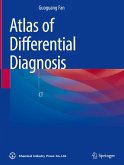More than 80% of all jaw lesions are radiolucent lesions. Lesions above the mandibular canal are considered odontogenic, those below the mandibular canal non-odontogenic. Evaluation of a radiolucent lesion always begins with establishing its relationship to the surrounding anatomical structures. The relationship to the maxillary sinuses, orbits, nasal cavity and then the mandibular canal must be established. The relationship with the dental roots must be established, then its endosseous extension and its extension into the soft tissues of the vicinity must be delineated. It is necessary to look for an enlarged mandibular canal, which could suspect a vascular or nervous lesion. If it is a multi-lobular lesion, poorly delimited or with cortical destruction, the assessment should be completed by an MRI.
Bitte wählen Sie Ihr Anliegen aus.
Rechnungen
Retourenschein anfordern
Bestellstatus
Storno








